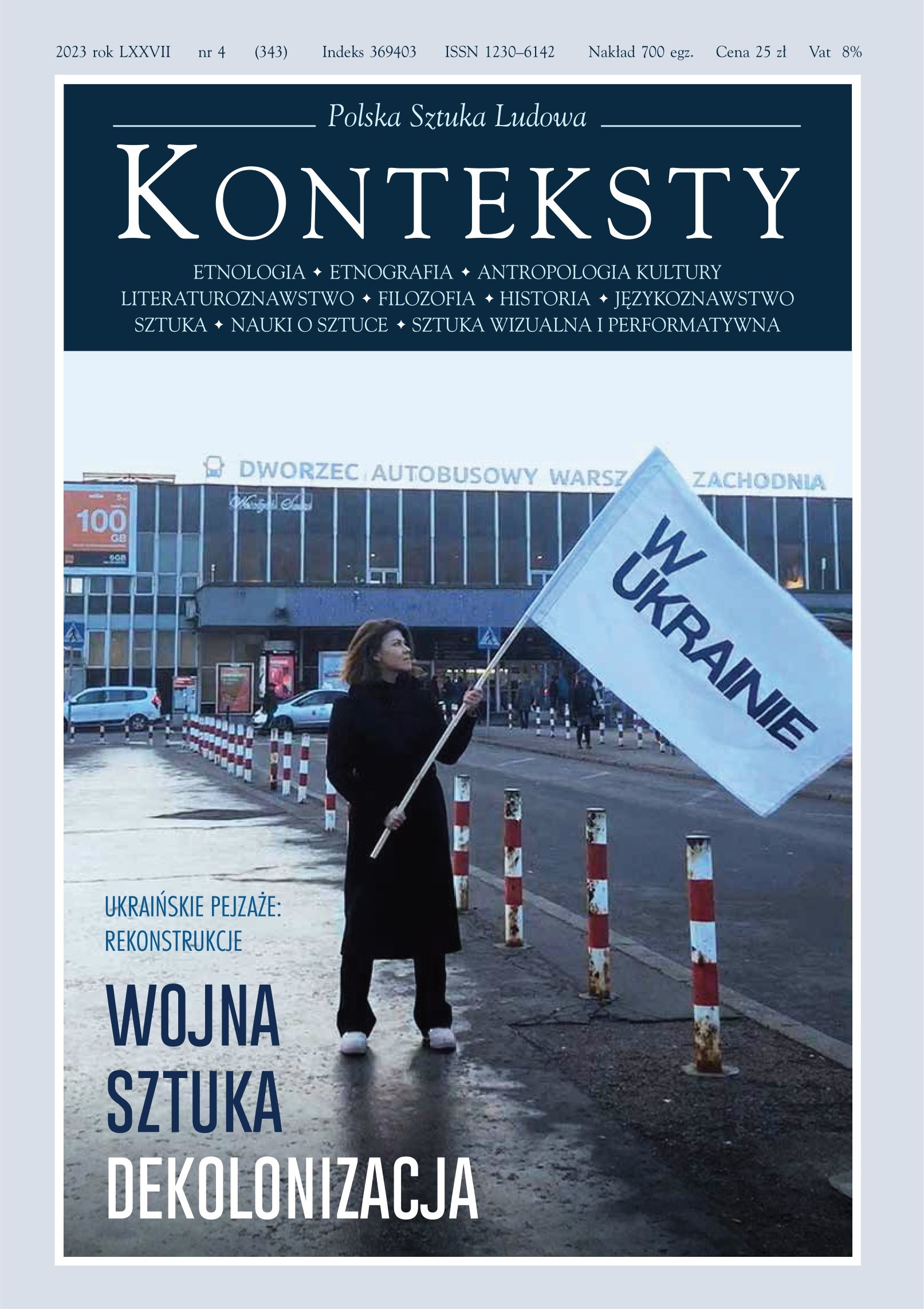1940s, 1950s – Polish Art Seen Anew
Marta Leśniakowska
marta.lesniakowska@ispan.plInstitute of Art, Polish Academy of Sciences (Poland)
https://orcid.org/0000-0002-9847-6765
Abstract
How do we see and interpret the art of the 1940s-50s today? A book by Anna Markowska, an art historian with ties to the Wroclaw community, Art and Revolution. A multi-perspective view of Polish art just after the war (2022) is part of the current turn of new interest in art just after the war. It is founded on the ground of revisionist art history and preposterousness, which makes it possible to attempt a new outlining of the cultural/artistic landscape of the time and to approximate the answer to an unresolved question: how the complexity of the social mood and political tensions of the time were reflected in that artistic culture. Markowska’s narrative is assemblage, multifaceted/multiperspective, combining the foundation processes of the new state with the revolution of modernity in a changed political situation. The revisionism of researching current historiographical practices (micro-history, horizontal history, preposterousness) allows uncovering overlooked, overlooked, ignored or downplayed issues and acquainted artists, and looks at cultural and social issues from a different perspective than before. They are signaled by the titles of the five parts/chapters, where the “blind spots” of art history as an academic discipline that monopolizes relations with art are exposed. This places new demands on today’s art history if it is to regain its position among the humanities again. The revision of the postwar art landscape deconstructs the previous field of art as a construct with specific political/ideological functions organized around the mythology of “great artists” and the authoritarianism of “expert power.” Using non-canonically different research strategies: micro-history, case studies or horizontal history, the publication exemplifies the current scientific essayism and narrativism in the humanities, answering not “what” but “who says.”
Keywords:
Anna Markowska, art, art historyAuthors
Marta Leśniakowskamarta.lesniakowska@ispan.pl
Institute of Art, Polish Academy of Sciences Poland
https://orcid.org/0000-0002-9847-6765
Art historian and critic, Professor at the Institute of Art of the Polish Academy of Sciences, university lecturer, visiting professor. She conducts research from a transdisciplinary and anthropological-cultural perspective in the fields of theory and history of architecture, visual culture of the 19th and 21st centuries, methodology of art history, and new art history in the perspective of the new humanities. Author of ten books and numerous scientific texts, as well as articles in the field of art criticism and dissemination of visual culture. Promoter of ten doctorates in the discipline of Art Sciences and more than a hundred master’s students. She teaches at 1st and 2nd level studies, doctoral studies, and postgraduate studies. Member of expert and review teams of, among others, the Ministry of Education and Science/Ministry of Science and Higher Education (in the programmes Diamond Grant, Pearls of Science, Juventus, National Programme for the Development of the Humanities), Foundation for Polish Science, advisory teams to the President of the City of Warsaw for the Cultural Heritage of Warsaw and Historical Art Workshops; member of programme boards of many cultural institutions (including, until 2017, the Zachęta National Gallery of Art) and foundations related to artistic culture. Curator of ten art exhibitions, especially of photography. Juror of exhibitions and competitions, i.a., at the Theatre Institute and the National Institute of Architecture and Urban Planning. She held scholarships from the Polish Academy of Sciences and the Ministry of Culture and National Heritage. Awarded the Bene Merenti medal for outstanding teaching achievements (2021) and the Gloria Artis Medal for Merit to Culture from the Minister of Culture and National Heritage (2014). In addition to her academic work, she practises photography art; her works are in private collections at home and abroad, and in the National Museum in Wrocław, and the Museum in Bydgoszcz.
Statistics
Abstract views: 224PDF downloads: 172
License
Copyright (c) 2025 Marta Leśniakowska

This work is licensed under a Creative Commons Attribution 4.0 International License.
Most read articles by the same author(s)
- Marta Leśniakowska, Tone, Ivy and the Senses , Konteksty: Vol. 347 No. 4 (2024): “On One Side, on the Other Side ” – the Paradoxes of Communication







